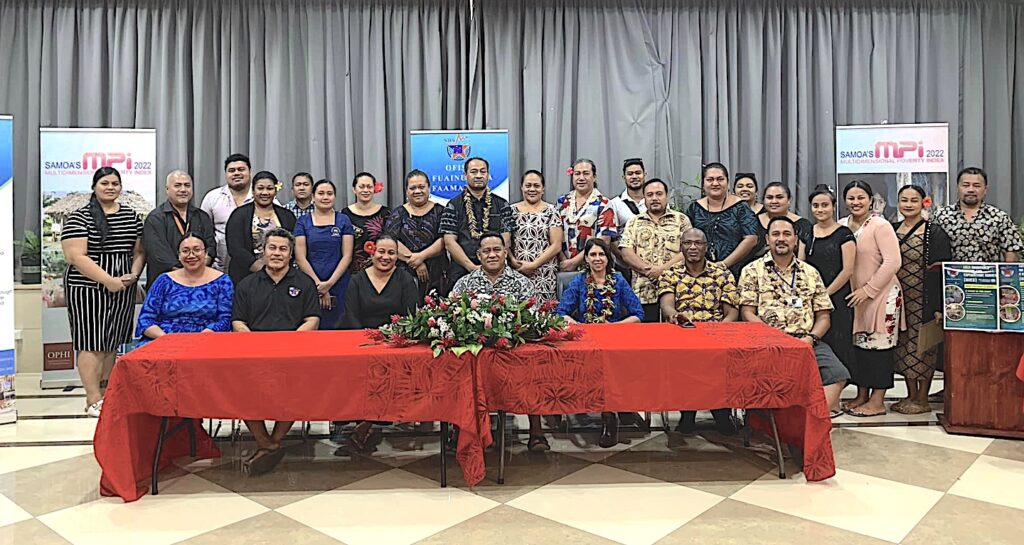
PRESS RELEASE – The Government of Samoa, through the Samoa Bureau of Statistics (SBS), now has an alternative tool for measuring poverty, thanks to the financial assistance and support of the United Nations Development Programme (UNDP’s) Social Protection Joint Programme.
The Multidimensional Poverty Index (MPI) complements the existing monetary measures of poverty. Samoa’s adoption of this multidimensional approach allows for a more comprehensive outlook on those who are living in poverty and where they are located, providing a more complete picture of poverty. The national MPI measures are context-specific and not comparable across countries and is a useful tool to monitor progress on the Sustainable Development Goals (SDGs).
The country’s adoption of the MPI is captured in the Samoa Multidimensional Poverty Index Report 2022, prepared by SBS in collaboration with UNDP, with technical assistance and support provided by the Oxford Poverty Human Development Initiative (OPHI). The Report was launched on February 23, 2023, along with SBS’s Samoa Hardship and Poverty Report 2022.
“The Multidimensional Poverty Index Report 2022 is based on the accessibility of individuals to non-monetary measures of poverty including access to health services and facilities, food and water, access to education including years of schooling, school lag and school attendance, and living standards including asset ownership, cooking fuel, internet connection and sanitation. Given Samoa’s international commitment to the SDG 2030 Agenda, the Bureau of Statistics is now able to compile Indicator 1.2.2 (proportion of population living in poverty in all its dimensions according to national definitions) from Samoa’s MPI Report 2022,” said Leota Laki Lamositele Sio, Minister of Statistics.
The development of the MPI for Samoa came after a series of trainings, conducted mainly virtually due to the COVID-19 pandemic last year, in collaboration with OPHI.

The MPI reflects poverty in different dimensions according to nationally defined indicators. The MPI will enable policymakers, implementers, and advocates as well as development partners to evaluate the effectiveness of existing public policy efforts and programmes (including Social Protection measures), and whether they are addressing the needs of different people who are living in the most vulnerable conditions in Samoa.
“The MPI determines the nature and intensity of deprivations a person faces at the same time with respect to education, health and living standards as three dimensions of poverty. It can be used to create a comprehensive picture of people living in poverty and permits comparisons within countries by geographic location and other key household and community characteristics. It will, notably, also give deep insights into gendered poverty – are poor women differently deprived than poor men, and are they overall more deprived? This makes it a critical analytical tool to identify the most vulnerable people, revealing poverty patterns within countries over time and enabling policymakers to target resources and design policies more effectively to where they have the greatest impact on achieving the SDGs,” said Verena Linneweber, UNDP Deputy Resident Representative.
The MPI initiative is a key activity for UNDP under the United Nations Joint Programme on Social Protection which UNDP has implemented jointly with sister agencies ESCAP, ILO, UNESCO and UNICEF under the leadership of the UN Resident Coordinator, Dr. Simona Marinescu. The joint programme aims at increasing resilience through sustainable social protection systems that will address life cycle vulnerabilities, strengthen social protection floors, and enhance employability. Understanding poverty comprehensively is a pre-condition for effective targeting of social protection measures in a context where public resources are limited and must be utilized in the most impactful way, to ensure that no one is left behind.